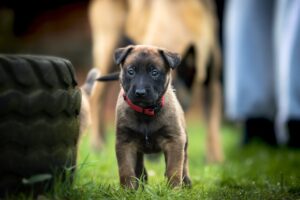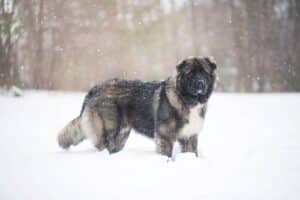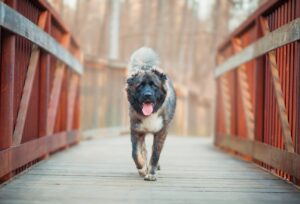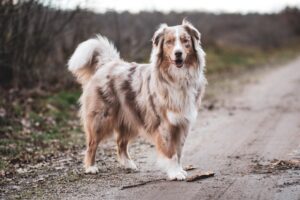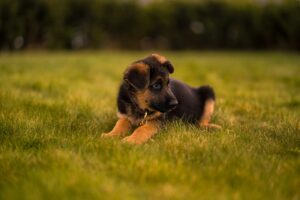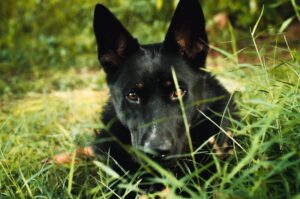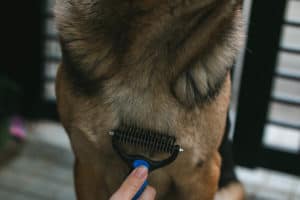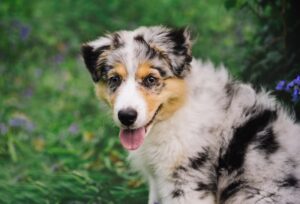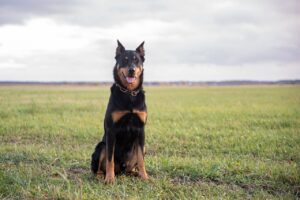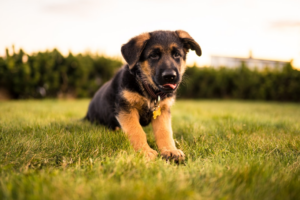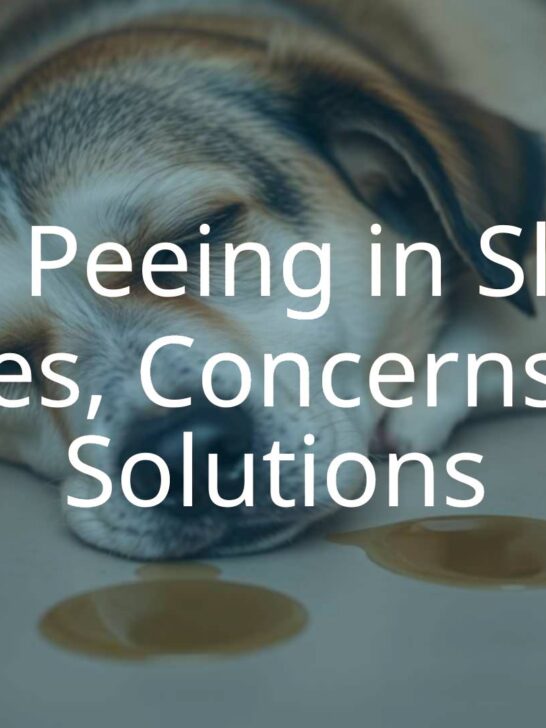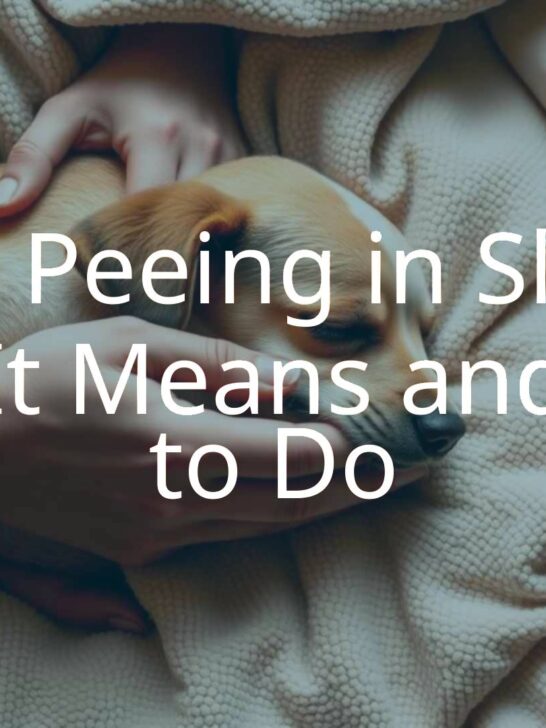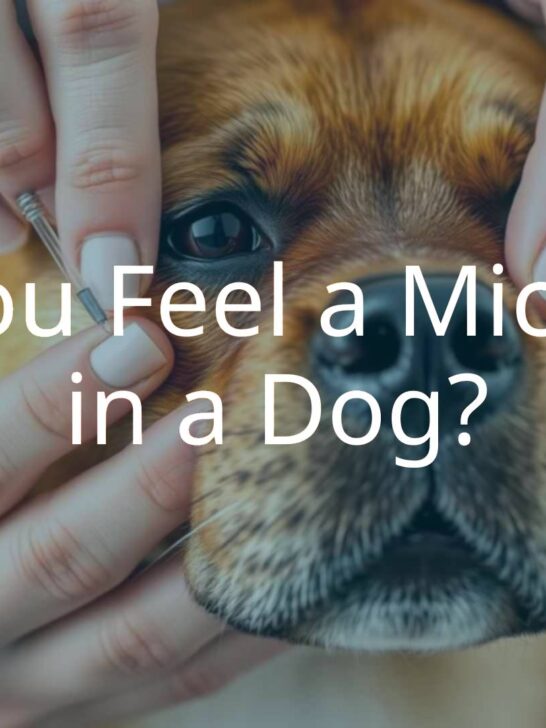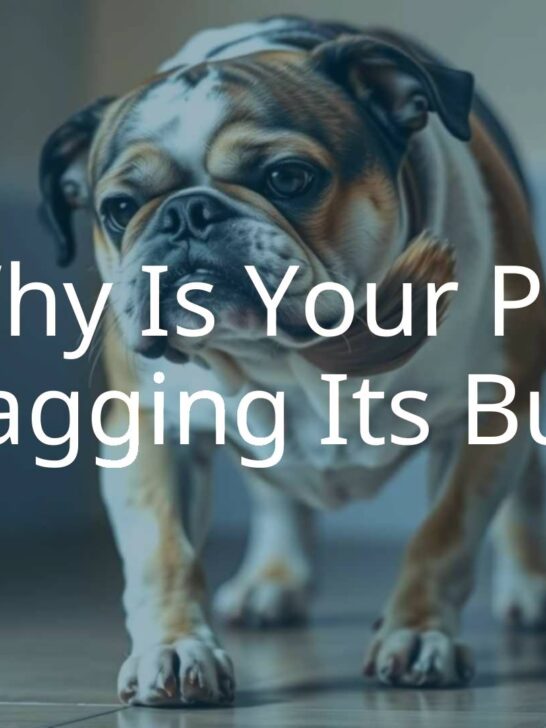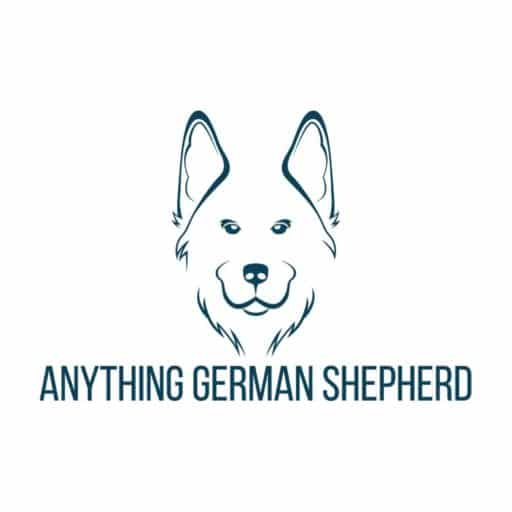Can Dogs Get Poison Ivy?
Yes, dogs can get poison ivy, although it doesn’t happen as often or as severely as in people. Many dog owners think their pets are safe because of their fur, but that’s not always true. Dogs can have reactions to the same oil, called urushiol, that makes people itch. Sometimes, these reactions can be very uncomfortable for your dog. Even if your dog isn’t bothered, they can still carry the oil on their fur and pass it on to you, which might leave you with an itchy rash.
It’s helpful for dog owners to know how poison ivy affects dogs, what signs to look for, and how to avoid or treat it. This article will explain what poison ivy is, how it affects dogs, and give you tips for keeping your dog safe and comfortable.

Understanding Poison Ivy and Its Dangers
Poison ivy (Toxicodendron radicans) is a plant found in most of the U.S., except Alaska, Hawaii, and a few places on the West Coast. It’s well-known for making people itchy with its rash. Poison ivy can grow as a ground-cover plant, a vine, or a bush, and changes color depending on the season-mixes of red and green in spring, bright green in summer, and shades of red, orange, or yellow in fall. Sometimes, the plant has small white flowers or berries.
The saying “Leaves of three, let it be” helps people spot poison ivy. Its leaves usually grow in groups of three, are often shiny, and can have smooth or jagged edges. But it’s not just the leaves you need to avoid-all parts of the plant (stems, roots, and berries) have urushiol, the oil that triggers reactions.
Why Does Poison Ivy Make Animals and People Itchy?
The reaction comes from urushiol, a sticky oil in the plant’s sap. This oil can last on surfaces for months or even years if not properly cleaned. When it touches skin, it binds to skin proteins and causes the body to react, which leads to redness, swelling, and blisters.
About 50-75% of people are allergic to urushiol, but animals, including dogs, cows, and horses, can react too. How bad the reaction is depends on each person or animal. Sometimes symptoms show up fast, and other times it takes a few days, which can make the cause hard to pin down. The rash itself doesn’t spread to others, but the oil can, especially from dog fur to human skin.
Can Dogs Really Get Poison Ivy?
Yes, dogs can get poison ivy. Their fur helps block some of the urushiol, but not all of it. Experts, like the Pet Poison Helpline, say dogs can get rashes from poison ivy, poison oak, or poison sumac. It’s less common in dogs than humans because of their fur and tougher skin, but it’s not impossible. Also, even if a dog isn’t itchy, the oil can hang onto their coat and get on people or other animals through touches, bedding, or furniture.
How Do Dogs Come Into Contact With Poison Ivy?
Most dogs get exposed when they walk, play, or explore places where poison ivy grows-like woods, fields, or overgrown yards. As they sniff and wander, they might rub up against the plant, and the oil sticks to their fur. Dogs who are short or have thin coats are more likely to touch poison ivy on their bellies or legs, where their hair is thinner. Also, dogs that chew on plants are at risk of eating poison ivy, which can cause different symptoms.
Can Dogs Get Poison Oak and Poison Sumac Too?
Yes, poison oak and poison sumac can also affect dogs because they have the same oil, urushiol. Poison oak looks a bit like poison ivy but usually grows as a bush and has leaves in threes, often with a fuzzy feel. Poison sumac prefers swampy areas and grows as a tall bush or small tree, with longer clusters of leaves. No matter which plant it is, the same advice applies: avoid contact and wash thoroughly after any suspected exposure.
What Are the Symptoms of Poison Ivy in Dogs?
It’s less common for dogs to show symptoms, but it can happen if they touch or eat poison ivy. The way the symptoms show up depends on if it was skin contact or eating the plant. It’s wise to watch for these symptoms, especially if your dog’s been in places where poison ivy, oak, or sumac grow. Also, other skin issues (like allergies or mites) can look similar, so your vet may consider those first if you notice problems.
Signs of Poison Ivy Reaction in Dogs
If your dog has touched poison ivy, you might see:
- Red, puffy skin: Most often on belly, groin, or inside thighs where fur is thin.
- Itching: Your dog may scratch, lick, or chew at the area, sometimes making the skin worse or causing infections.
- Blisters and scabs: Sometimes dogs get blisters which can break and scab over.
- Hives: Some dogs break out in raised, red bumps.
If your dog eats poison ivy, you might notice:
- Vomiting or diarrhea: Upset stomach is the main issue here.
- Drooling: This can mean irritation in the mouth.
- Loss of appetite: Your dog may refuse food or act uncomfortable.
- Belly pain: Signs of discomfort in the stomach area.
Very rarely, a dog may go into anaphylactic shock, a dangerous allergic reaction with trouble breathing, heavy drooling, fast heartbeat, seizures, swelling of face or mouth, and possibly collapse. This needs immediate care from a veterinarian.
How Do Dog Reactions Compare to People?
Compared to people, dogs don’t usually react as strongly to poison ivy. Their fur acts as a natural shield, so full-body rashes are uncommon. The places with less fur (like belly or ears) are most at risk. Humans, on the other hand, often get blisters and rashes over a bigger area. Dogs may also eat the plant, which can give them stomach problems, while people rarely eat it. Importantly, dogs can pass the oil to people even if the dog isn’t itchy.
How to Treat Poison Ivy in Dogs
If you think your dog has touched poison ivy, act quickly to limit their discomfort and prevent spreading the oil. The main goal is to get the urushiol off your dog as soon as you can and deal with any symptoms.
Remember, even if your dog looks fine, they might still have oil on their fur that could rub off on you.
What to Do Right Away If Your Dog Is Exposed
- Wear Gloves and Old Clothes: Before touching your dog, put on waterproof gloves and long sleeves to keep the oil off your skin.
- Wipe Down Your Dog: If possible, use cleaning wipes or a towel to gently wipe your dog’s fur, especially on their paws, belly, or wherever they might have brushed against the plant. Throw away the towels or wipes after use.
- Give Your Dog a Bath: Wash your dog with cool or lukewarm water and a dog-safe shampoo (one with oatmeal is good for itchiness). Scrub everywhere, but especially spots with little fur. Rinse really well, and it’s a good idea to shampoo two or three times to be sure all the oil is off.
- Clean Everything Else: Wash any bedding, collars, leashes, towels, or your own clothes that may have touched your dog, using hot water and regular detergent. For surfaces like floors or furniture, use rubbing alcohol followed by a regular cleaner. For soft surfaces that can’t be washed easily, use a carpet or upholstery cleaner.
Helping Your Dog Feel Better at Home
- Oatmeal Baths: Use an oatmeal shampoo or soak your dog in a bath with special colloidal oatmeal to calm itchy skin.
- Cool Compresses: Use a cool, wet towel on red or swollen spots to soothe them.
- Prevent Scratching: Keep your dog from biting or licking the area to avoid infections. An Elizabethan collar (cone) helps, and keeping nails short also reduces damage.
Avoid using human creams, like calamine lotion or coconut oil, unless your vet says it’s okay, since dogs may lick them off and get sick.
When You Need to Call the Vet
- Rash isn’t getting better or is spreading.
- Lots of redness, open sores, or deep blisters.
- Vomiting, diarrhea, or stomach pain after eating the plant.
- Breathing troubles, swelling, pale gums, collapse, seizures, or lots of drooling.
- Strange behavior, acting very tired, or not eating.
The vet may give your dog antihistamines, anti-inflammatory medicine, medicated baths, or antibiotics if the rash gets infected. If your dog ate the plant, they might use activated charcoal or do other treatments to get rid of the toxin.
When Should You See a Vet?
If you’re ever unsure, it’s always best to talk with your vet. If your dog’s symptoms are mild, a bath and some home care might be enough, but watch for anything getting worse or not improving.
Serious Warnings That Need Emergency Vet Care
- Trouble breathing or heavy panting.
- Sudden swelling of the face, lips, or throat.
- Lots of drooling, especially with other serious symptoms.
- Weakness, acting very tired, or collapsing.
- Vomiting or diarrhea that won’t stop or has blood.
- Signs of shock: very light gums, confusion, seizures.
- Big, deep blisters or sores.
If you see any of these, go to a vet right away. You can also call the Pet Poison Helpline at (855) 764-7661 or the Animal Poison Control Center at (888) 426-4435, but getting your dog to the vet is usually best with serious symptoms.
Can People Catch Poison Ivy From Their Dog?
Yes, people can get poison ivy from their dog’s fur. Even if your dog does not show a rash or seem bothered, the urushiol oil can stick to their coat. If you pet or hug your dog, or if their belongings are contaminated, that oil can easily end up on your skin and cause a rash.
The oil is sticky and may stay on fur or household surfaces for a long time if not washed off.
How Does the Oil Move From Dog to Person?
| How It Happens | Description |
|---|---|
| Petting or Handling | Touching your dog’s fur after outdoor time can put the oil on your hands, then your face or body. |
| Brushing Against Fur | If your dog leans on your clothes or skin, especially after rolling outside, the oil spreads. |
| Shared Items | Collars, leashes, bedding, or even furniture your dog touched can transfer the oil to you. |
You might not get the rash right away. Sometimes, it shows up days or weeks after touching something with the oil.
What Should Owners Do After Suspected Exposure?
- Always wear gloves when handling your dog or their things after being outside.
- Give your dog a bath right away with a good dog shampoo and rinse well to remove oil.
- Wash anything your dog touched: Bedding, leashes, collars, clothes, and towels should all go in the wash (hot water is best).
- Clean surfaces like floors or furniture using rubbing alcohol, followed by your usual cleaner. For rugs or soft things, use a carpet cleaner.
- Wash your hands with soap and water after finishing clean-up, even if you wore gloves.
- Limit contact with your dog until you are sure they are clean.
Following these steps can help you and your family avoid a rash.
How to Prevent Poison Ivy Exposure in Dogs
The best way to protect your dog is to keep them away from poison ivy in the first place. Knowing what the plant looks like and steering clear is your best move. Make it a habit to practice good hygiene after walks or hikes, especially in areas with a lot of plant growth.
Tips for Spotting and Staying Away From Poison Ivy
- “Leaves of three, let it be”: If you see a plant with three leaves per stem, avoid it. This goes for poison ivy and poison oak.
- Check the Plant’s Look: Poison ivy can crawl along the ground, climb, or look like a bush. The leaves can be shiny or dull and might have smooth or notched edges, changing color with the season.
- Pay Attention to Where It Grows: It can grow in woods, parks, fields, roadsides, or even your yard.
- Use a Leash: Keeping your dog close helps you keep them away from patches of unknown plants.
- Stick to Clear Paths: Walk on marked trails and avoid bushy or overgrown spots.
- Learn Local Plant Types: Look at pictures online or from sources like the U.S. Food & Drug Administration to see how poison ivy, oak, or sumac look where you live.
On walks, bring a towel and gloves. If your dog rubs against a suspicious plant, you can gently wipe their legs or belly before letting them back in the car or house.
Grooming Habits After Outdoor Time
- Check paws and belly: After each walk, especially in wild areas, check your dog for any plant bits, dirt, or ticks.
- Wipe down legs and body: Use a damp cloth or pet-safe wipes on your dog’s lower body and paws. Wear gloves while doing this.
- Bathe regularly: If your dog spends a lot of time outside or in risky areas, give them a bath with mild or oatmeal shampoo from time to time to get rid of any hidden urushiol.
- Wash grooming tools: Clean any brushes or towels you used, especially if you suspect contamination.
- Protective clothes: For dogs with short hair, or those who go into thick brush, use dog boots or shirts for a little extra coverage. Wash these items after trips outside.
By watching your surroundings and keeping up with cleaning and grooming, you can help protect your dog (and yourself) from poison ivy rashes.

